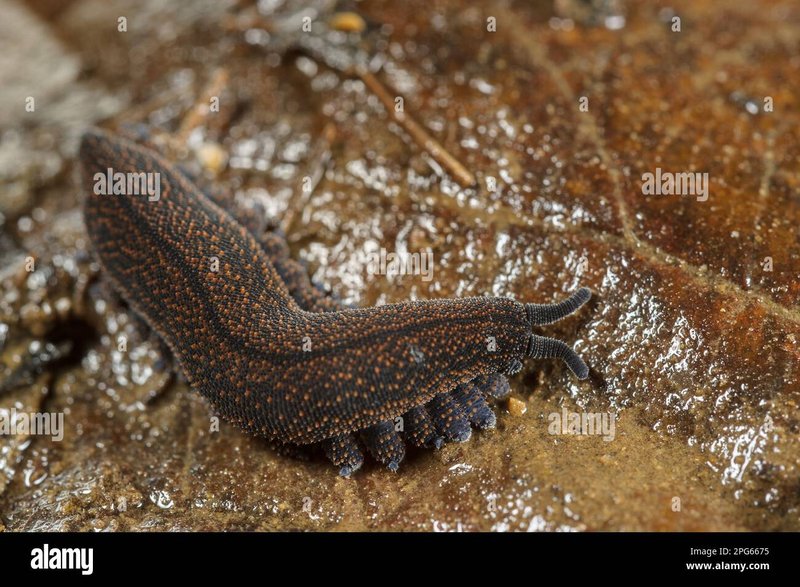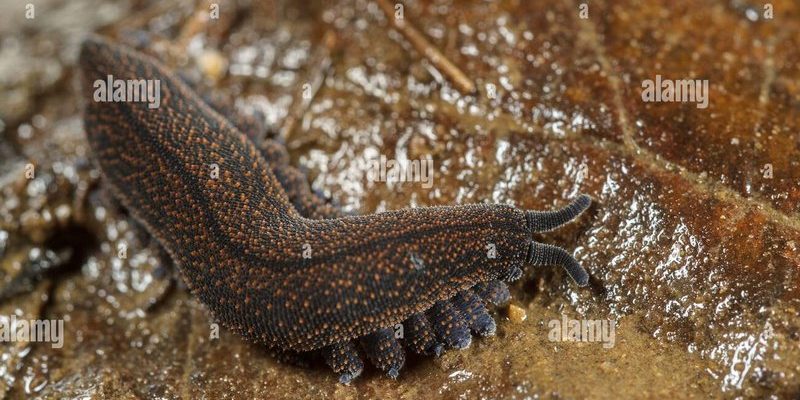
Velvet worms, or *Onychophora*, are intriguing little beings that thrive in the damp, dark layers of leaf litter. They might not be the flashiest creatures, but they have a lot to offer when it comes to maintaining our ecosystem’s health. Think of them as the unsung heroes of the forest floor. With their velvety texture and quirky way of moving, they contribute significantly to the biodiversity and nutrient cycling in their habitats. Let’s dig deeper into how these remarkable worms interact with their surroundings and why they’re so important.
What Are Velvet Worms?
Velvet worms are soft-bodied, segmented invertebrates that resemble a blend between a caterpillar and an earthworm. They typically grow to a length of about 1 to 15 centimeters, depending on the species. What’s truly fascinating is their unique anatomy: they have multiple pairs of stubby legs, equipped with tiny claws that help them navigate through leaf litter and other organic matter.
You might be wondering, “Why should I care about these odd little creatures?” Well, for starters, velvet worms are an essential part of the leaf litter ecosystem. They serve as both predators and prey, playing a pivotal role in the food web. Their diet mainly consists of small insects and arthropods, which they capture using a special adhesive slime they produce. Imagine they’re like nature’s own little glue guns, catching their meals with precision!
The Role of Velvet Worms in Ecosystems
In the grand scheme of things, velvet worms contribute to the health of their ecosystems in several ways. **First**, they help control the population of other small invertebrates, maintaining a balance that is crucial for the overall health of the forest floor. If predator populations like velvet worms were to decline, we could see a surge in their prey populations, leading to an imbalance that can harm plant life and soil quality.
**Second**, their feeding habits also assist in the decomposition process. As they consume organic matter and other small creatures, they break down nutrient-rich materials that contribute to soil fertility. This natural recycling is vital for plant growth, helping to sustain the ecosystem as a whole.
Lastly, velvet worms also serve as indicators of environmental health. Since they thrive in moist, undisturbed habitats, their presence can signal a well-functioning ecosystem. If velvet worm populations start to dwindle, it could suggest larger issues at play, like habitat degradation or pollution.
Where Do Velvet Worms Live?
You might be surprised to learn that velvet worms are primarily found in tropical and subtropical regions around the world. They love humid environments, thriving in leaf litter, under rocks, and in decaying logs. These habitats provide them with the moisture they need to survive and keep their bodies from drying out.
For example, if you were to take a stroll through a rain forest, you might find velvet worms hiding among the rich layers of decomposing leaves. They feel right at home in such environments, where they can easily blend in and hunt for food without being detected.
Interestingly, the specific type of leaf litter can influence the types of velvet worms you might encounter. Different species prefer different conditions, often linked to the humidity levels and the substrate’s composition. So, the next time you’re in a forest, take a closer look at the ground—you might just spot one of these incredible creatures!
The Unique Behavior of Velvet Worms
One of the coolest aspects of velvet worms is their way of moving and hunting. They have a unique locomotion that resembles a slow, flexing crawl. It’s not fast, but it’s efficient. As they glide through the leaf litter, their legs help propel them forward, leaving a trail that can sometimes be spotted if you know what to look for.
When it comes to hunting, velvet worms employ a fascinating strategy. Instead of just waiting for their prey to come to them, they actively seek out small insects. Here’s the thing: they produce a sticky slime that can immobilize their prey almost instantly. It’s like they’ve got their own built-in net! Once they capture an insect, they use their sharp jaws to consume it. This method is not only effective but also showcases their adaptability in a competitive ecosystem.
Another interesting behavior is their social structure. Some species of velvet worms can be quite social, living in small groups. They communicate through touch and chemical signals, which helps strengthen their social bonds and coordinate activities like hunting and mating.
The Importance of Leaf Litter Ecosystems
Now that we’ve explored the role of velvet worms, it’s important to understand the bigger picture—leaf litter ecosystems themselves. These rich, complex environments are made up of decomposing organic matter. They serve as vital habitats for countless organisms, including fungi, bacteria, and other invertebrates, all of which play fundamental roles in nutrient cycling.
Leaf litter is critical in preventing soil erosion and maintaining moisture in the soil. As it breaks down, it enriches the soil with nutrients, making it healthier for plants. Think of leaf litter as nature’s compost pile—essential for growing healthy vegetation and supporting wildlife.
Moreover, the interactions that occur within leaf litter ecosystems create a web of life that connects various species. This interconnectedness is vital for biodiversity. A decline in one species, like velvet worms, can ripple through the entire ecosystem, affecting plants and animals alike.
Conservation and Threats to Velvet Worms
Despite their resilience, velvet worms face several threats that could impact their populations. Habitat loss, often due to deforestation and urbanization, poses a significant risk. As their homes are destroyed, these unique creatures struggle to find suitable environments to thrive in.
Pollution is another critical factor. Chemicals used in agriculture can seep into the soil and affect the moisture levels and overall health of leaf litter ecosystems. Since velvet worms rely heavily on these environments, their survival is directly tied to the health of their habitats.
Conservation efforts are becoming increasingly important as we learn more about these fascinating creatures and their roles. Protecting their habitats and reducing pollution can help ensure that velvet worms continue to thrive in our forests. Educating others about their importance can also spark interest and concern for their conservation.
Velvet worms might not be the first creatures that come to mind when you think of forest ecosystems, but they play an invaluable role in leaf litter habitats. Their unique adaptations, hunting strategies, and contributions to nutrient cycling highlight their importance in maintaining ecological balance.
As we deepen our appreciation for the natural world, understanding the delicate interplay of life, from the tiniest worm to the largest tree, becomes crucial. Protecting these ecosystems and the velvet worms that inhabit them ensures that the rich tapestry of life continues to thrive. So, the next time you find yourself on a forest floor, remember to look closely—you might just discover the hidden wonders of the velvet worm!

